What is cancer?
Our body is made up of many cells. Healthy cells follow the “rules” when they divide and they know when to die.
Cancer happens when cells start to grow out of control. When these cells grow and divide, they can form a lump called a tumour. Not all tumours are cancer. Some are non-cancerous (also called benign).
Healthy cells dividing:

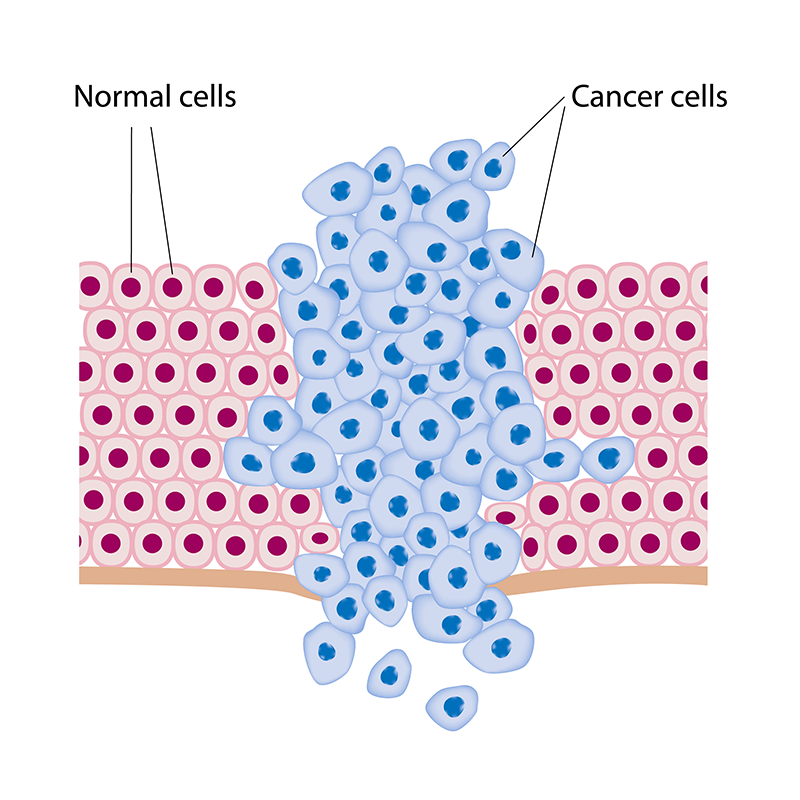
Alila © 123rf.com
It might help to use the example of a garden:
A healthy body
Imagine your body as a garden. The soil is your immune system, the good plants are your good cells, and the weeds are the cancer cells. When you’re healthy, the good plants grow and the soil helps keep the weeds away. When the odd weed starts to grow, the body is able to get rid of it by itself.
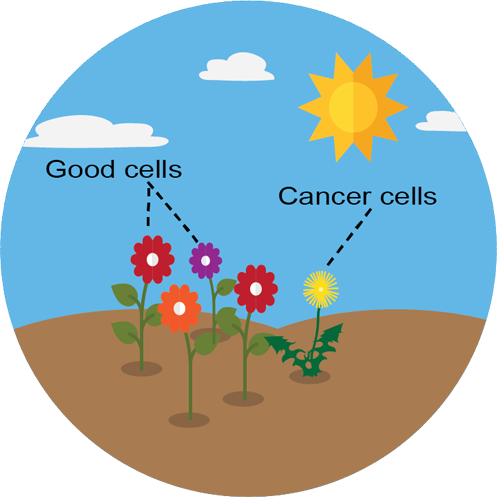
A body with cancer
Cancer cells are like weeds in your garden. Sometimes the body cannot get rid of the weeds and needs help.
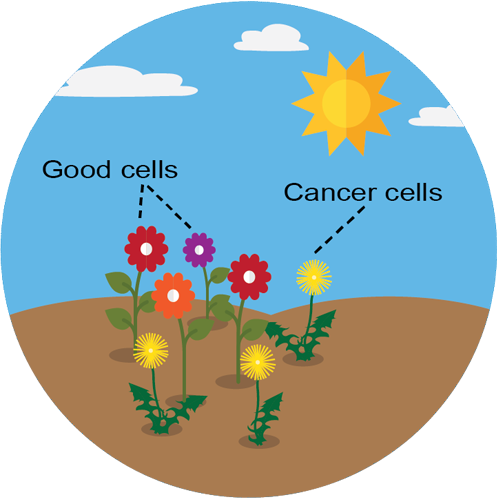
What is breast cancer?
Breast cancer can happen in both women and men, although, it is rarer in men. The treatment for both men and women with breast cancer is similar and care after surgery is the same.
It can be helpful to understand the parts of the breast (anatomy), how cancer is measured (staging and grading), and the role hormones play in the body and breast cancer.
Your breasts
The
female breast has lobes, ducts, fat tissue, and supporting ligaments. The
male breast is a lot like the female breast, but smaller in size. Your breast tissue starts from under your arm, continues up to the collarbone, and into the centre of the chest. Inside the breast there are lobes and ducts.
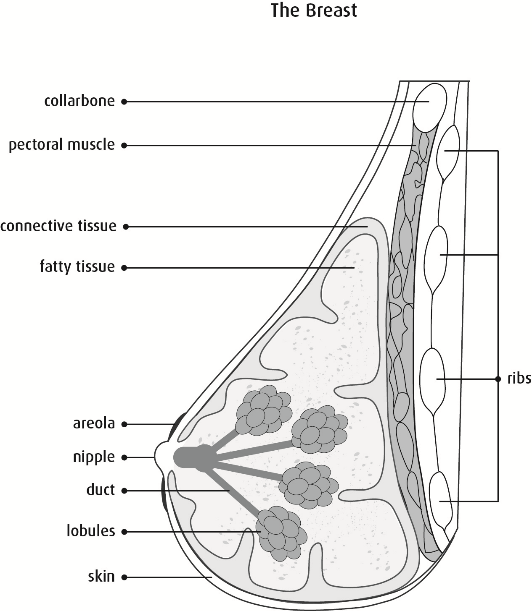
Copyright © 2017 Canadian Cancer Society. Graphic used with permission.
Lobes are made up of small, tube-like structures called lobules. Lobules contain milk glands that make milk for breastfeeding. Ducts carry milk from the lobules to the nipple. Fatty tissue surrounds the breast.
The breast has lymph vessels and lymph nodes to protect the body against infection and diseases.
Lymph nodes
Lymph nodes are small glands that are in groups throughout your body. Lymph nodes are connected by lymph vessels. Breast lymph vessels bring fluid from your breast and arm to the lymph nodes at the collarbone and armpit. The lymph nodes then filter this fluid to remove bacteria, viruses, and cancer cells. If breast cancer spreads, it will most often spread to lymph nodes under your arm before spreading to any other part of your body.
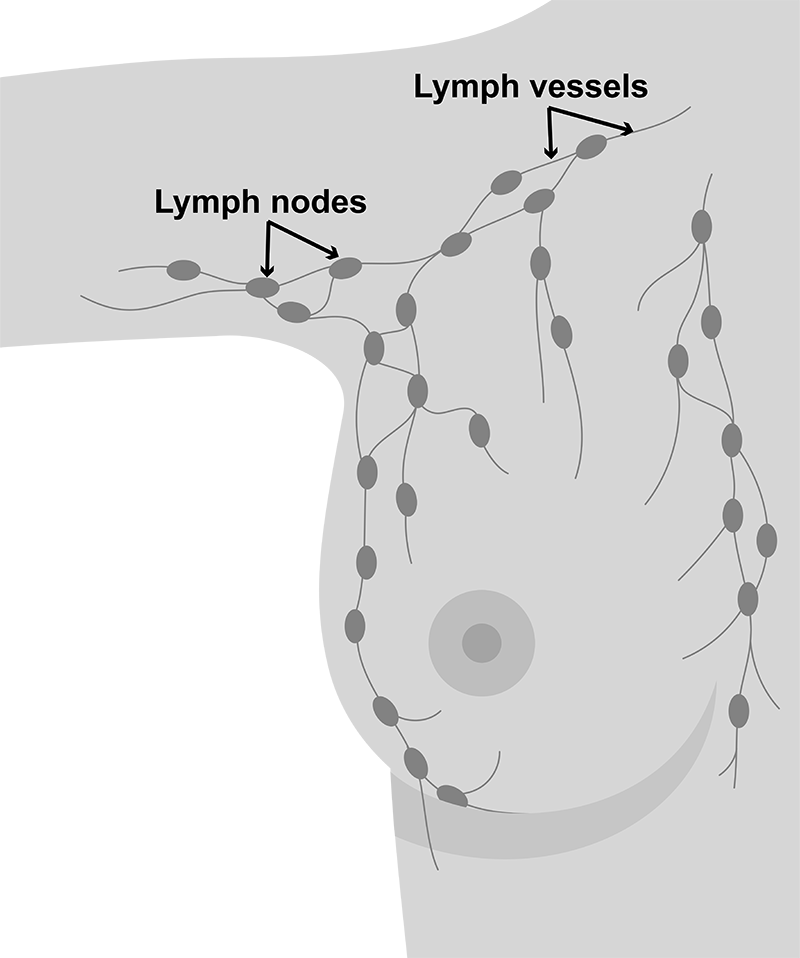
Copyright © 123rf.com
There are different kinds of breast cancer. Your healthcare team will discuss your type of breast cancer with you. Write your type on
My Plan.
Breast cancer staging
Staging is a way for your healthcare team to find out how much cancer there is and where it is in the body. Sometimes, the cancer is not just in one area. Your doctor will be able to tell you the stage of your breast cancer after all tests, biopsies, and surgery are complete. Most doctors use the
TNM way of staging cancer:
-
T is the tumour size
-
N refers to whether cancer is found in your lymph nodes
-
M refers to whether cancer is found in other areas of the body (metastasized)
This chart explains the different ways the cancer will be reported:
TNM Staging Chart for Cancer
|
| T (tumour) |
N (lymph nodes) |
M (metastasis) |
|
TX: Unable to measure tumour.
Tis: (T in situ) Tumour hasn't grown through the wall of the duct into nearby tissue.
T1 to
T4: Tumour of increasing size (numbers 1 to 4 describe how large the tumour is).
|
NX: Unable to evaluate lymph nodes.
N0: No cancer found in lymph nodes.
N1 to
N3: Cancer has spread into lymph nodes. (numbers 1 to 3 are based on how many nodes are involved).
|
M0: Cancer hasn't spread to other parts of the body.
M1: Cancer has spread to other parts of the body.
|
Your treatment plan options will depend on the stage of your cancer.
Breast cancer grading
In addition to a TNM rating, your cancer will also be “graded.”
Grade is a “score” that tells how different the cancer cells look and grow compared to normal, healthy breast cells. A pathologist (a doctor specializing in cells and tissue), will rate the cancer on a scale of 1 to 3:
-
Grade 1 - low grade (well differentiated): Grade 1 cancer cells look a little different from normal cells and grow in slow, well-organized patterns. Not many of the cells divide to make new cancer cells.
-
Grade 2 - intermediate or moderate grade (moderately differentiated): Grade 2 cancer cells don’t look like normal cells and grow and divide a little faster than normal.
-
Grade 3 - high grade (poorly differentiated): Grade 3 cancer cells look very different from normal cells and grow and divide quickly in disorganized and irregular patterns.
Hormone receptors
Your body has estrogen and progesterone hormones. Sometimes, these hormones attach to receptors on the cancer cells, which can make your cancer grow faster. In addition to the staging and grading, the cancer cells will also be tested for these receptors. Your cancer cells will be tested to see if they have estrogen or progesterone receptors.
Cancers are called hormone receptor-positive or hormone receptor-negative based on whether or not they have these receptors. About 8 out of 10 cancers are hormone-receptor positive.
Knowing your hormone receptor status is important when deciding treatment options with your healthcare team.
Discuss your results with your surgeon and cancer specialist.
HER2 status
About 2 out of 10 people have a type of breast cancer that makes too much of a protein called
HER2. These are called HER2-positive breast cancers. HER2-positive breast cancers tend to grow and spread faster than other breast cancers, but there are treatments that work very well for them.
Your HER2 results are part of your cancer treatment plan. Discuss your results with your surgeon and cancer specialist.
Check off your receptor status on
My Plan.
